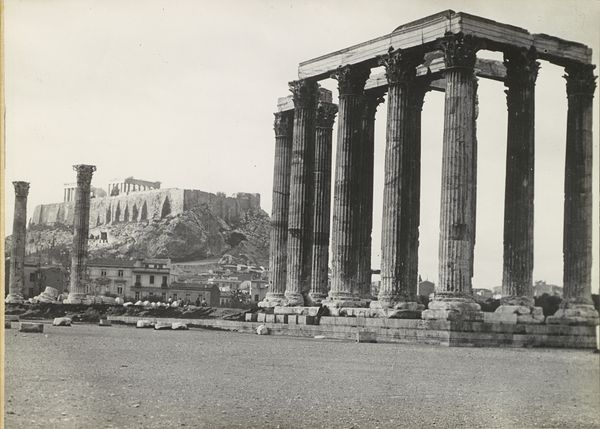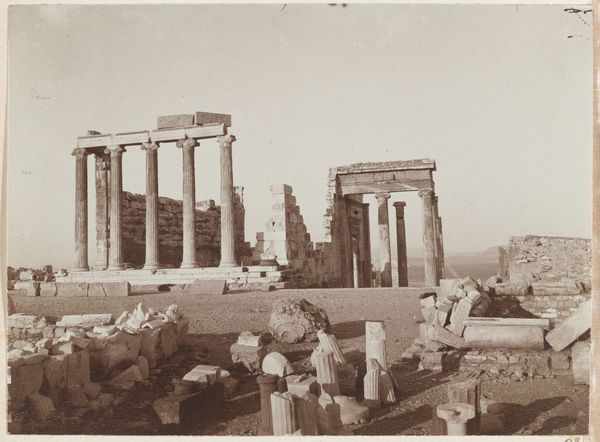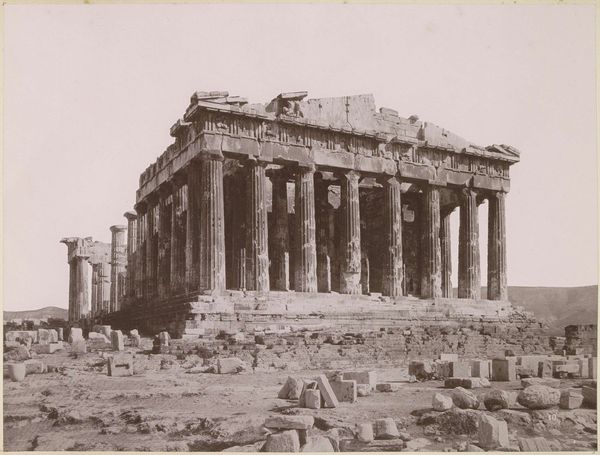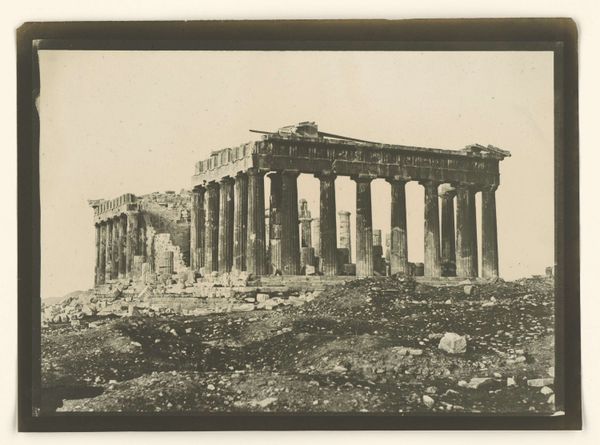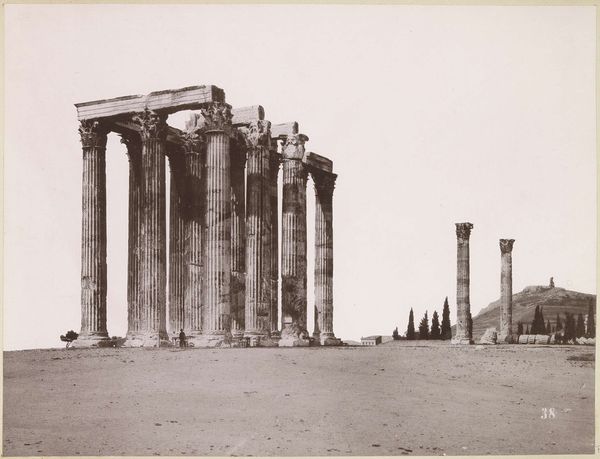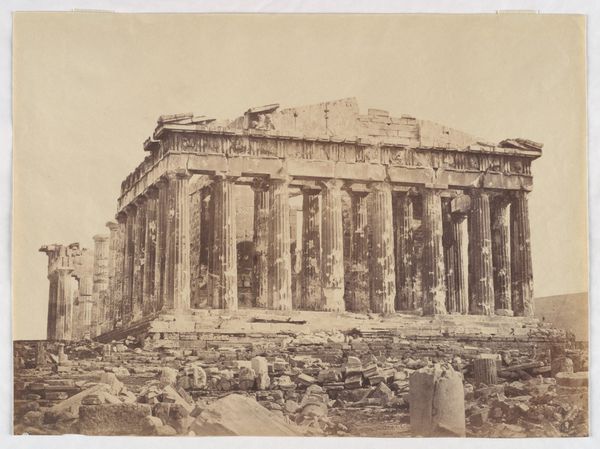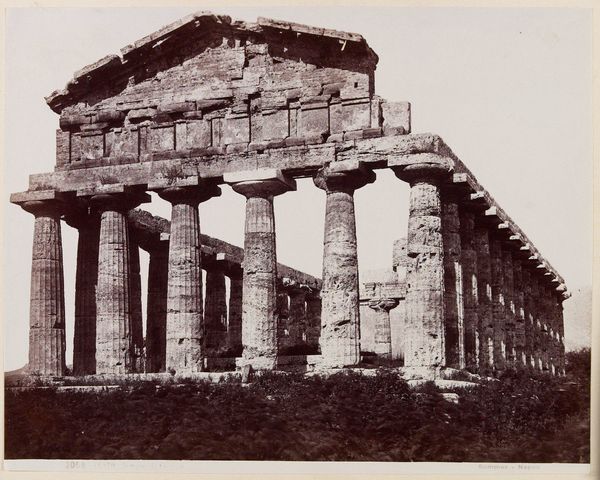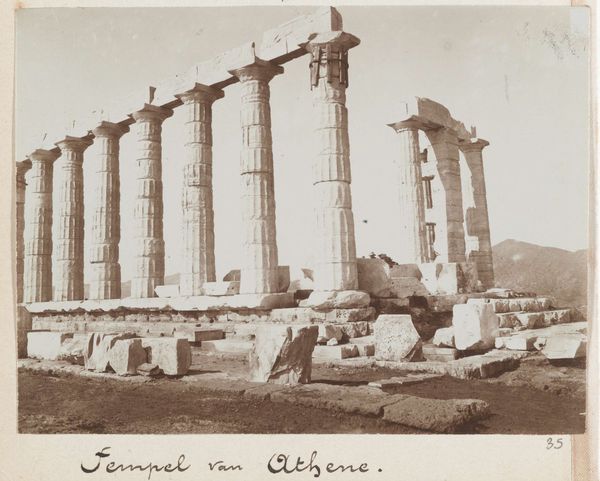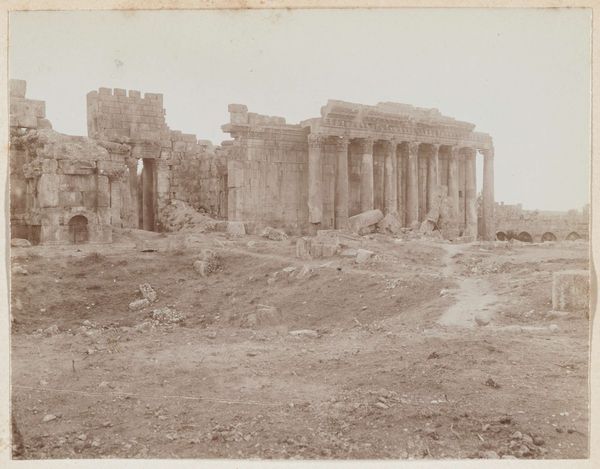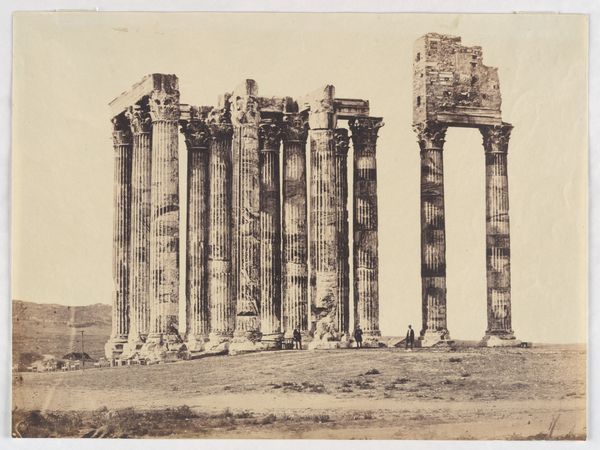
photography, gelatin-silver-print, architecture
#
greek-and-roman-art
#
landscape
#
photography
#
ancient-mediterranean
#
gelatin-silver-print
#
19th century
#
watercolor
#
architecture
#
realism
Dimensions: height 81 mm, width 107 mm
Copyright: Rijks Museum: Open Domain
Curator: This gelatin silver print, titled "Parthenon op de Akropolis van Athene," captures the iconic structure in 1898. Johannes Lodewijk Heldring, the photographer, presents the Parthenon in a state of visible ruin. It is imposing, yet...fragile. Editor: Imposing is right, I’m struck by the sheer materiality of the thing. It looks almost sculpted from dust, or hewn from the very earth itself. What’s most interesting is how Heldring makes you conscious of all the labor required to make something so massive – and what that labor means over time. Curator: Yes, I agree entirely! It does have that primordial quality, like emerging from the land. But beyond its physical presence, there's this potent echo of human ambition and fallibility, the kind that churns within us even today. You look at that structure and feel small, yes, but also deeply connected to a stream of striving. Editor: Precisely! And a stream of extracting, quarrying, transporting, all the embodied human effort – enslaved and otherwise. This is a civilization built, literally, on resources, both human and mineral. Seeing the stones scattered, makes me wonder what all those anonymous hands endured? What are the narratives hidden within these materials? Curator: That really lands—seeing it in the present, we lose the tangibility of labor, don't we? In its day, the Parthenon gleamed with painted color. Imagine the skill and time that required. Heldring captures it at a stage when that vividness is stripped away. I can only speculate on that missing color… a kind of silent commentary on time, on value? Editor: Well, think of pigment, think of dyes: what they signify, their cost and availability relative to that time period, and even what processes create those things? Understanding material culture and process means considering those stories and that lost vibrancy opens new pathways of thinking. The choices in building matter and shape the cultures. Curator: Absolutely, the very nature of that loss carries meaning! I think looking at it like this…stripped, exposed…almost invites us to actively reimagine what that culture held valuable, why it endured, and why eventually everything fades. It makes history so very alive. Editor: So alive, but also highlighting what gets overlooked in the conventional narrative, like the complex global networks that made that dazzling, albeit vanished, color possible!
Comments
No comments
Be the first to comment and join the conversation on the ultimate creative platform.
